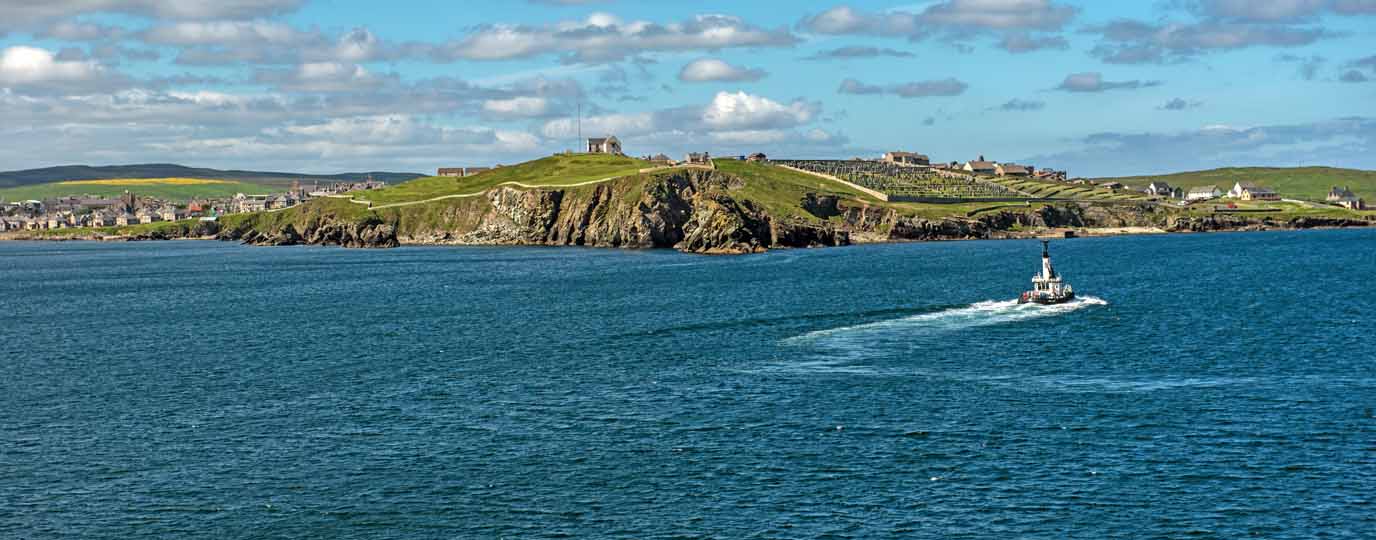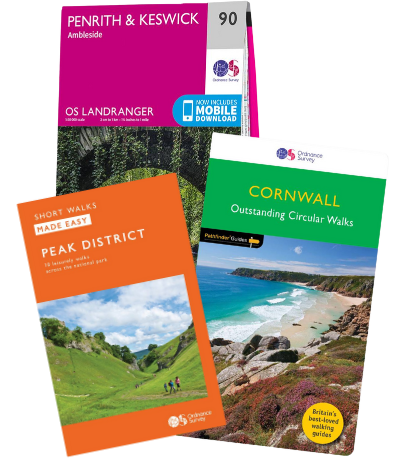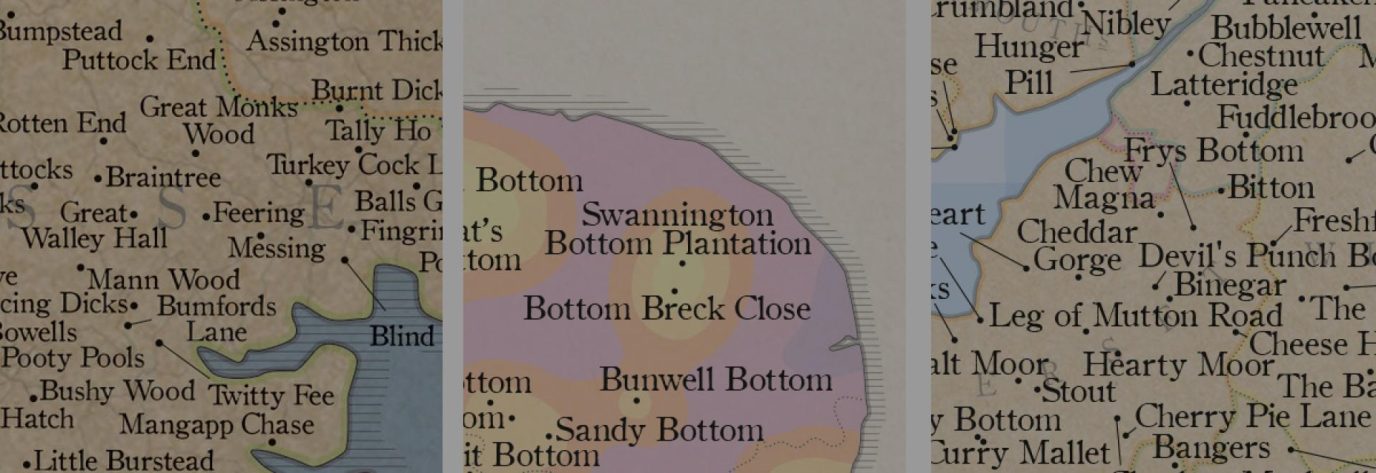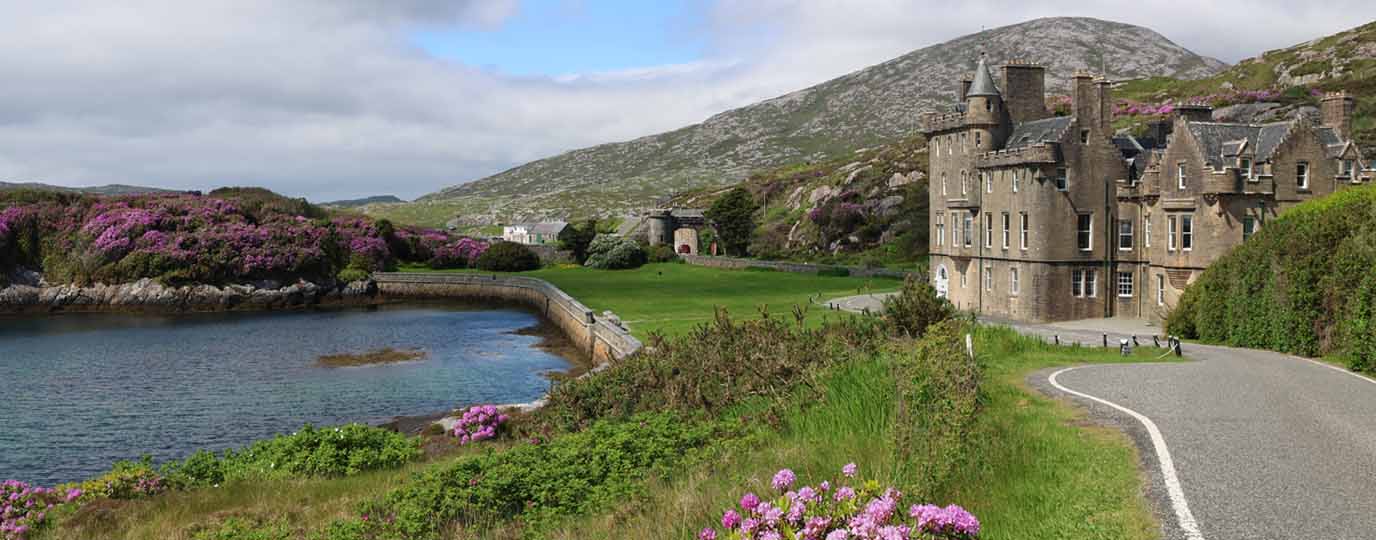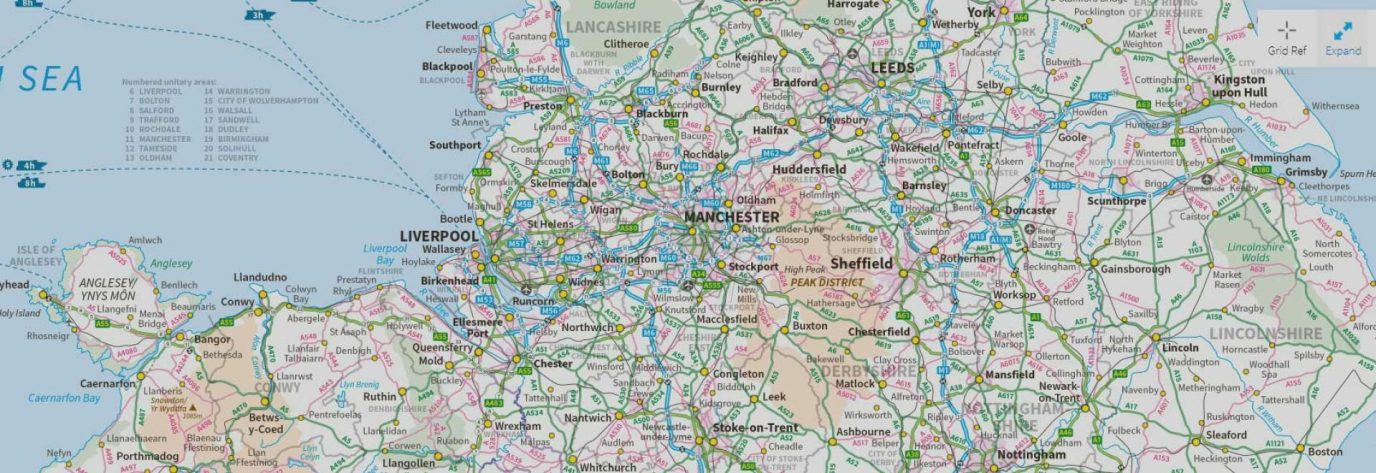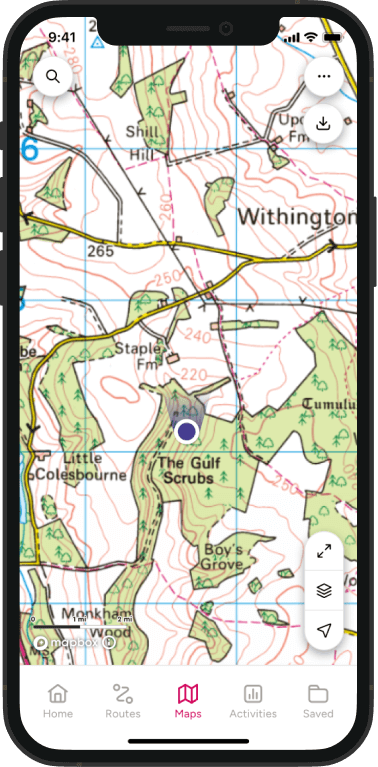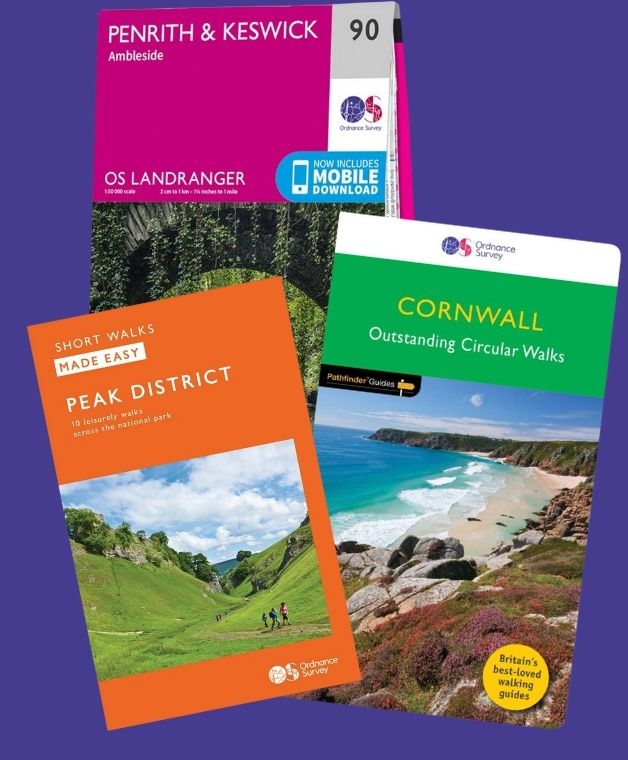Find the original meanings of British place names that use Scandinavian source words with this extensive list of terms, along with pronunciation.
For more place name origins, take a look at our articles:
To see the location of each place, copy and paste the grid references into OS Maps.
Introduction to Scandanvian
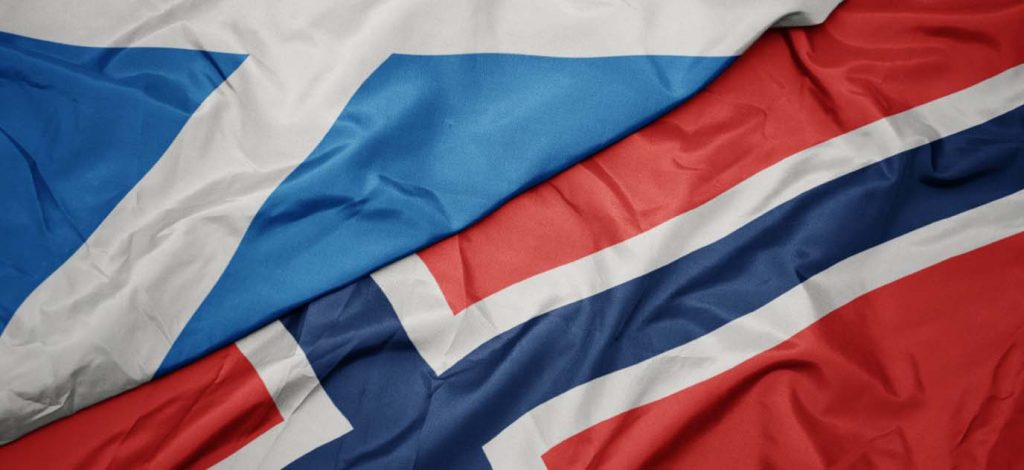
The Scandinavian place names across Scotland can be traced back to a number of origins and influences, and it would be wrong to collectively refer to these simply as the ‘Vikings’.
Let’s look at four areas of Scotland individually – each with its different Scandinavian story.
The Northern Isles (Shetland and Orkney) is the area with probably the biggest Scandinavian influence. Settlers from Norway arrived around AD800 and their rule lasted several centuries.
As a result, the vast majority of place names in this area are of Scandinavian origin.
In the Western Isles, what is referred to as Old Norse (ON) was spoken for several centuries, and many islands, settlements and large geographic features – such as the highest mountains and largest inlets and bays – still have Scandinavian names.
While the Norse language didn’t last so long down the west coast mainland of Scotland it left a considerable legacy in the place names.
However, the collapse of the Norwegian overlordship in 1266 led to a resurgence of Gaelic. Norse place names started being pronounced and later spelled in Gaelic. Some Norse names were replaced by Gaelic ones.
Also, many Scandinavian words were borrowed into Gaelic as loanwords and were then used to create place names by Gaelic speakers. For example the Gaelic word ‘sgarbh’ is derived from the Old Norse ‘skarfr’, meaning ‘cormorant’. Therefore the place name Geodha nan Sgarbh (NB0116) can’t be called Norse as it was coined by Gaelic speakers.
In the third area – the south-west of Scotland (Dumfries and Galloway) – the Scandanavian place names have been influenced by linguistic links to the north of England, the Isle of Man and Ireland, so aren’t always easily recognisable.
In the fourth area, the south-east of Scotland, the place name elements are clearly linked with Scandinavian names in the north of England, so may be traced back to Danish, rather than to Norwegian.
As the Scandinavian influence spread across Scotland during several unrelated settlement movements, there are various languages to consider. The Scandinavian settlers of the Northern and the Western Isles spoke West Scandinavian or West Norse, often referred to simply as Norse or Old Norse (ON), from which both Norwegian and Icelandic are derived.
The place names of the south-west indicate that the Scandinavian settlers who arrived from Ireland (who seem to have been mainly West Norse speakers) may already have been acquainted with Gaelic. Yet the names of south-east Scotland point to East Scandinavian (Danish) influence, while in Shetland and Orkney, Norn, a language that developed from ON, was spoken until the 18th century.
All examples shown in the Scandinavian glossary below come from the Northern Isles or north-east Caithness. This is because in other areas, subsequent languages have altered the place names, sometimes beyond recognition. In some parts of the country it’s very difficult to distinguish between Scots and Scandinavian place names.
The list of Scandinavian-influenced place name elements reflects the orthography (how it’s written or spelled) on modern Scottish maps. The entries are arranged in alphabetical order for easy reference. In the second column each element is linked with its original form, an example being the element brei, as in the place name Brei Geo (HU3787), which originates from the ON adjective breiðr, ‘broad’.
All ON forms given in the glossary are based on the Icelandic-English dictionary – details of which are given in the section Further information at the end of this post.
What is the Scandinavian alphabet?
The column containing the ON forms introduces us to a number of unfamiliar characters:
- ð: known as ‘eth’, occurs in words such as fjörðr, related to Scottish standard English ‘firth’, and represents a voiced [th] as in the English ‘the’.
- þ: known as ‘thorn’, represents a voiceless [th], as in English ‘thorn’. It occurs in ON words such as þing meaning ‘assembly’, ‘meeting place’ and in þveit, ‘piece of land’, ‘clearing’.
- ö: found in ON höfn, ‘harbour’, or ON strönd, ‘coast’, ‘shore’ represents a sound very like German ö (o-Umlaut) which is like the ‘e’ sound in the English word her.
- æ: found in ON words like fær, ‘sheep’ and forms part of the names Fair Isle (HZ1871) and Fara (ND3295).
As well as these characters, another difference between the Norse and the English alphabet is the Norse use of acute accents on the vowels a, o, u, i and y (depicting a sound located between [u] and [i]). An accent on a vowel means that the vowel is long.
What is the structure of Scandinavian place names?
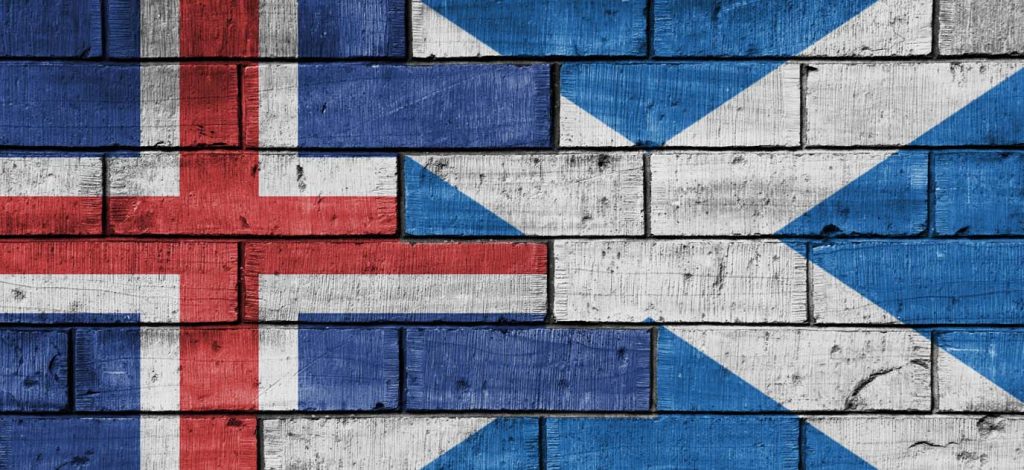
Like place names in most languages, Norse names are largely descriptive and usually reflect how the name-givers perceived their surroundings. So we find names referring to the shape of natural features, such as Longa Berg (HU3520), ‘long promontory’, ‘long rock’; or relative location, such as in Isbister (HU3790) from ON eystri, ‘easterly’; or ON hár, ‘high’, as in Hahouse (HY4551) or Ha Banks (HY4919).
There is an important group of place name elements that refers to actual farms or settlements, such as the frequently found -bie from ON býr, ‘farm’, as in Trenabie (HY4350), South Breckbie (HY2426) and Houbie (HU4548), ON bólstaðr, ‘farm’, which in Shetland and Orkney occurs as -bister (Kirkabister (HU5495), Westerbister (HY4602)), but takes the forms of -bost, -pol or -bol in Hebridean place names.
The generic -sta is from ON staðir ‘steading’, ‘farm’, as in Hoversta (HY4117) and Griesta (HU4144), whereas ON setr ‘residence’ and sætr ‘dwelling place’, ‘hill pastures’, ‘dairy lands’ developed into the frequently occurring element setter, as in Dalsetter (HU5099) and Winksetter (HY3415), as well as –ster, as in Swinister (HU3380).
Animals such as horses, lambs and sheep are regular components of place names such as Hestwall (HY4702) from ON hestr, ‘horse’, ‘stallion’, Lama Ness (HY6843), from ON lamb, ‘lamb’, and Sorquoy (ND4691), from ON sauðr, ‘sheep’. Coastal terminology is often inspired by fish and mammals living in the waters such as salmon, ON lax, in Lax Firth (HU4760) and, whale, ON hvalr, in Whal Geo (HU1751).
Soil type also inspired names such as Grut Ness (HU6592) from ON grjót, ‘gravel’, and Lerwick (HU4841) from ON leir, ‘mud’, ‘clay’. An important category of descriptive place names are, of course, colours with ON svartr, ‘black’, as in Swarthoull (HU2978), ON rauðr, ‘red’, in Roe Clett (HU3978) and ON grár, ‘grey’, as in Grobust (HY4249), to name but a few.
The Scandinavian place names of Scotland follow straightforward composition patterns. Most place names are made up of more than one element, with a linguistic relationship between the elements. For example a generic element (a noun) and a descriptive, qualifying or specific element.
- Definite article + generic: Place names can consist of a single generic element, usually a noun. These are often preceded by the English definite article ‘the’. Examples are, The Tongues (HU3721) from ON tangi, ‘spit of land’, ‘tongue’; The Skeo (HU4434) derived from ON skjá, ‘hut for drying fish’, and The Crook (HU2986), based on ON krókr, ‘bend’.
- Specific + generic: This is the most common composition pattern. Whereas generics are always nouns, specifics can be either nouns or adjectives. Typical examples of names consisting of an adjective and a noun are Deepdale (HU3825), ‘deep valley’, from ON djúpr, ‘deep’, and ON dalr, ‘valley’, and Brettabister (HU4857), from ON brattr, ‘steep’ and ON bólstaðr, ‘farm’. Breiwick (HU2256), from ON breiðr, ‘broad’ and vík, ‘bay’ follows the same pattern, as does Midness (HU4572), from ON miðr, ‘middle’ and ON nes, ‘headland’, ‘promontory’.
- Generic + preposition + existing place name: Place names following the above pattern are very typical of the Northern Isles. The preposition linking the generic and the specific is usually the Scottish English word ‘of’ (Scots ‘o’). The specific is always an existing place name. Examples of this pattern are Burn of Forse (HU5289), Garth of Tresta (HU6190), Burn of Swartabeck (HY3808) and Clett of Thusater (ND0671).
Scandinavian place names glossary
This is a glossary of the elements from Scandinavian most frequently found in the place names of Britain. The first column gives the name element in the form found in place names. The original Old Norse word from which the element derives follows, together with its meaning. Examples (with grid references) are given for each element.
To see the location of each place, copy and paste the grid references into OS Maps.
Abbreviations:
| adj = adjective nf = noun feminine nm = noun masculine nn = noun neuter |
| Element | ON original | Meaning | Examples |
|---|---|---|---|
| a | ey nf | island | Foula HT9539 Fladda HU3784 |
| ay | ey nf | island | Orfasay HU4977 Housay HU6771 |
| ayre | eyrr nf | gravelly bank | Ayre of Breiwick HU5561 Fugla Ayre HU4661 |
| baa | boði nm | hidden submerged rock, breaker, reef | Flugga Baa HU6299 Gerda Baa HU5799 |
| back, bakka | bakki nm | bank of a river, slope | Backarass HY4148 Ness of Bakka HU1751 |
| beck | bekkr nm | brook, burn | Knowes of Maebeck HY4952 Burn of Swartabeck HY3808 |
| berg | berg nn | promontory, rock, rocky soil | Longa Berg HU3520 Midberg HU5988 |
| bie | boer, býr nm | farm | Murbie Stacks HU3062 Houbie HU6190 |
| bister | bólstaðr nm | dwelling place, house | Kirkabister HU5495 Westerbister HY4602 |
| bratta | brattr adj | steep | Bratta Stack HU5989 Brattibeck HU2844 |
| breck | brekka nf | slope | Brattabreck HU3892 Breck of Hillwell HU3714 |
| brei | breiðr adj | wide, broad | Brei Geo HU3787 Breiwick HU2256 |
| bretta | brattr adj | steep | Brettabister HU4857 Brettavale HY3020 |
| brim | brim nn | surf | Brim Ness HP5105 |
| burra | borg nf | fortification | West Burra HU3632 Noust of BurralandHU3775 |
| by | boer, býr nm | farm | Houseby HY6721 Tiptoby HU6091 |
| clett | klettr nm | rock | Clett Skerry ND3095 Clett of Thusater ND0671 |
| cliff | kleif nf | rock | Cliffdale HY6325 Moo Cliff HY3906 |
| crook | krókr nm | bend | The Crook HU2986 Crooksetter HU4076 |
| cros, cross | kross nm | cross, junction | Crosbister HP5803 Cross Kirk HU2178 |
| dale | dalr nm | valley | Deepdale HU3825 Quendale HU3714 |
| deep | djúpr adj | deep | Deepdale HU3825 |
| fair, far | fær nf | sheep | Fair Isle HZ1871 Fara ND3295 |
| fell | fjall nn | rough hill, mountain | Kat Fell HU3268 |
| firth | fjörðr nm | firth, fjord, sea-loch | Sellafirth HU5198 Laxfirth HU4759 |
| fiska, fiski | fiskr nm | fish | North Fiski Geo HU4696 Fiska Ness HU3066 |
| fladda | flatr adj | flat | Fladdabister HU4332 Fladda HU3797 |
| fors, forse | fors nm | waterfall | Forse HY5300 Burn of Forse HU5289 |
| foul | fugl nm | fowl, bird | Foula HT9539 Foulageo HU4335 Foula, Wick HU3664 |
| garth | garðr nm | >enclosure, fence, farmyard | Frustigarth HY5218 Garths of Tresta HU6190 |
| geo | gjá (gjó) nf | chasm, rif, gully | Ramnageo HP6200 Sultigeo HY3011 |
| gerdi | gerði nn | enclosure | Gerdie HP6208 |
| gil, gill | gil nn | ravine, narrow gully | Djupa Gill HU4066 Feetnies Gill HU3615 |
| gro | grár adj | grey | Grobister HY6524 Grobust HY4249 |
| gruin, grunna | grunn nn | shallows | Grunna Voe HU4766 |
| grut | grjót nn | gravel | Grut Ness HU6592 Grut Wick HU5070 |
| ha, haa | hár adj | high, upper | Ha Banks HY4919 Hahouse HY4551 |
| ham | höfn nf | haven, harbour | Hamister HU5463 |
| hamar | hamarr nm | steep rock, rocky hillside | Hamar HU5894 Hamar Geo HU5191 |
| hamma, hammer | hamarr nm | steep rock, rocky hillside | Hamma Cletts HU3166 Hamma Ayre HU3361 |
| hamna | höfn nn | haven, harbour | Hamna Heog HP6509 Hamna Dale HU5065 Hamnavoe HU4980 |
| heog | haugr nm | mound, cairn | Heog HU4971 Heoga Berg HU4538 |
| hesta, hesti | hestr nm | horse, stallion | Hesti Geo HU3881 Hestwall HY4702 |
| hevda | höfði nm | headland | Stour Hevda HU5273 Hevdawick HU3365 |
| ho | hár adj | high, upper | Hoy HU3744 Hoo Field HU4227 |
| hoga | hagi nm | outfield, pasture | Hogaland HU3936 Hoga Ness HP5500 |
| holm | holmr nm | islet | Holm of Burrafirth HU3557 Long Holm HY3014 |
| hope | hópr nm | bay | Longhope ND3292 |
| houll | hóll nm | hill | Moss Houll HU5181 Queys Houll HU6098 |
| housa | hús nn | house | Housabister HU4958 Housa Wick HU5491 |
| howe | haugr nm | mound, cairn | Howe Taing ND4294 Maes Howe HY3112 |
| hus | hús nn | house | The Hus HU1655 |
| is | eystri adj | easterly | Isbister HU3790 |
| kirk | kirkja nf | church | Kirk Ness HU5565 Kirkabister HU5495 |
| lama | lamb nn | lamb | Lama Ness HY6843 |
| land | land nn | piece of ground | Houlland HU5080 Mailand HP6008 |
| lang | langr adj | long | Langa Skeo HY3208 |
| lax | lax nm | salmon | Lax Firth HU4760 |
| lee | hlið nf | hillside, slope | Lee of Laxo HU4563 Lee Taing HU4333 |
| ler | leir nm | mud, clay | Lerwick HU4841 Ler Geo HU2585 |
| ling | lyng nn | heather | Lingarth HP6009 |
| lund, lunn | lundr nm | grove | Lunnasting HU4665 Lunna Ness HU5071 |
| mid | miðr adj | middle | Midbister ND4490 Midness HU4572 |
| mire | mýrr nf | swampy moorland, mire | Hesta Mires HU4994 Mires of Oddsetter HU5992 |
| ne | nyr adj | new | Nebister HY6337 |
| neap | gnípa nf gnúpr nm | steep hill | Hamara Neap HU5966 West Neap HU5891 |
| ness | nes nn | headland, promontory | Ness HU2158 Scat Ness HU3809 |
| nor | norðr adj | northerly | Norbister HU3732 Norwick HU3681 |
| noup | gnúpr nm | peak | Noup Head HY3950 Noup of Noss HU5539 |
| pap | papi nm | priest, cleric | Papa Skerry HU3738 Papa Stour HU1660 |
| pund | pund nn | enclosure | Pund of Burravoe HU3890 Houlls Pund HP5805 |
| qui | kví nf | enclosure | Qui Ayre HY2115 Qui Ness HP6203 |
| quoy | kví nf | enclosure | Quoys of Catfirth HU4454 Gritquoy HP5803 |
| ramna | hrafn nm | raven | Ramna Geo HU5591 Ramna Taing HU3242 |
| roe | rauðr adj | red | Roe Clett HU3978 Roeness HU3243 |
| ron, rona, roo, roonies | hraun nn | rocky hill-ground | Langa Roonies HU3367 Roonie Geo ND3792 |
| ros, ross | (h)ross nn | horse | Ross Geo HY4849 |
| scord | skarð nn | valley crossing a ridge | Scord HU5992 Northscord HU3366 |
| setter | setr, sætr nn | dwelling place, house | Dalsetter HU5099 Winksetter HY3415 |
| sil | sild nf | herring | Silwick HU2942 |
| ska | skagi nm | cape, low point of land | Skaaga HU1655 Skaw HP6516 |
| skaill | skáli nm | hut, shieling | Langskaill HY4321 Aikerskaill HY5804 |
| skeo | skjá nf | hut for drying fish or meat | Langa Skeo HY3208 The Skeo HU4434 |
| sker | sker nn | skerry | Taing of Tor Sker HY7345 Innsker HY5221 |
| so | sauðr nm | sheep | Sorquoy ND4691 |
| sta | staðir (pl) nm | steading farm | Hoversta HY4117 Griesta HU4144 |
| stack, stakk | stakkr nm | hill, precipitous rock | Aastack HU4596 Stakka Vatn HU3529 |
| stane | steinn nm | (standing-)stone | Whitestanes HY4715 Kirk Stane HY5316 |
| stav | stafr nm | staff, post, stick, stave | Stav Geo HU3786 Stava Ness HU5060 |
| stem, sten | steinn nm | (standing-)stone> | Stenness HU2177 Stembister HY5302 |
| ster | setr, sætr nn | dwelling place, house | Swinister HU3380 Ocklester HY5102 |
| stour | stórr adj | big | Papa Stour HU1660 Stour Houll HU3073 |
| strand | strönd nf | coast, shore | Strand HU6691 |
| strom | straumr nm | stream, running water | Strom HU3948 Stromfirth HU4050 |
| swart | svartr adj | black, dark | Swarthoull HU2978 Swart Hamar HY6238 |
| sweinn, swin | svín nn | pig | Sweinna Stack HU4391 Swinister HU3380 |
| taf | topt, tupt nf | house, site, foundation | Evertaf HY4551 Kirkatafs HU5598 |
| taing | tangi nm | tongue, spit of land | Taing of Berstane HY4710 |
| ting | þing nm | assembly, meeting, place of parliament | Tingwall HY4022 North Nesting HU4559 |
| tof | topt, tupt nf | house, site, foundation | Tofs of Tain ND2465 Thurdistof ND2067 |
| tongue | tunga nf | tongue, spit of land | The Tongues HU3721 Tongue Field HU4131 |
| twatt | þveit nf | piece of land, clearing | Stennestwatt HU2351 Brunatwatt HU2450 |
| vat, vatn | vatn nn | lake | Vatsland HU4646 Virda Vatn HU3529 |
| vird, virda | varða nf | heap of stones, cairn | Vats Virda HU4333 Middis Vird HU3072 |
| voe | vágr nm | small sheltered bay | Loura Voe HU4453 Snarravoe HP5602 |
| wall, well | völlr nm | field, level ground, meadow | Tingwall HY4022 |
| west | vestr adj | westerly | Holm of Westquoy HY3607 |
| whal, whale | hvalr nm | whale | Whale Firth HU4693 Whal Geo HU1751 |
| wick | vík nf | bay | Whale Wick HU3632 Wick of Aith HU6389 |
Further information and references
Top image: Lerwick, Main Shetland Island. Ler (mud, clay) and wick (bay).
- Cleasby, Richard; Vigfússon, Gudbrand (1957): An Icelandic-English Dictionary, 2nd edition, Oxford University Press. For an online version of the first edition (1874)
- Jakobsen, Jakob (1936): The Place-Names of Shetland, London and Copenhagen.
- Marwick, Hugh (1952): Orkney Farm Names, Kirkwall.
- Nicolaisen, W F H (2001): Scottish Place-Names – Their Study and Significance, John Donald, Edinburgh.
- Stewart, J. (1987): Shetland Place-Names.
Useful links
See the collection of guides to place names in Britain:
